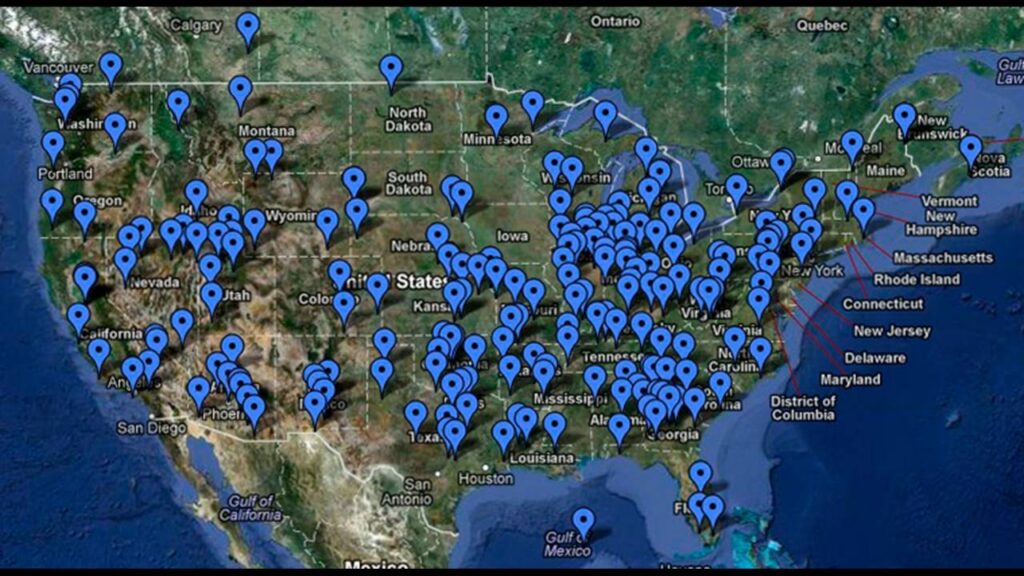By Medeea GreereNovember 10, 2023No Comments22 Mins Read

SHARE
Vatican Secret Archives: The Entire History of Humanity Locked Away
Medeea Greere, an independent publisher, is now on Telegram at https://t.me/AMGNEWS2022 and exists only on reader support as we publish Truth, Freedom and Love for public awareness. Thank You for your support!
The Vatican Secret Archives
Vatican City is the smallest country on earth; it covers less area than New York’s Central Park; if you were to walk from one side to the other, barely half a mile, you might stroll beneath the mighty columns of the iconic St. Peter’s Square, gaze upon the Sistine Chapel, St. Peter’s Basilica, or the Apostolic Palace, the architectural majesty of one of humanity’s most historically significant cities.
And yet, what is most significant historically is perhaps not what stands on top of the earth, but what lies beneath it. There, in a fortress-like bunker, closed to the public and protected by armed guards, lies an incredible 53 miles of shelving – more than 100 times the distance from one side of Vatican City to the other, dug deep into the earth. On these shelves sit 12 centuries’ worth of documents, and unmatched history not just of the Catholic church, but of the world as we know it.
This is the Vatican Secret Archive, and hidden within it are the original recordings of some of history’s most essential and well-known events. There are some, however, who say that this is not all that is hidden there. Some believe that deep beneath the Vatican is a different kind of history, one of secret powers, apocalyptic prophecies, and perhaps even extraterrestrials.
The Creation of the Vatican Secret Archives
As early as the 1st century, the Catholic church was already preserving official records of its operations. These records were entrusted to the care and ownership of the earliest Popes, traveling with them wherever they went and being passed to their successors when they died. As the religion and its influence spread, the growing size of the records made this untenable, and the church began to store them at the Pope’s official residence.
By the 11th century, archives were being kept in at least three different locations – St. Peter’s Basilica in Vatican City, as well as the Lateran and the Palatine Palace nearby in Rome.
Of course, the Middle Ages were a time of constant conflict across Europe, and, on more than one occasion, the locations housing these Vatican records were sacked, resulting in the loss of large portions of the archives. In 1404, the Vatican itself was sacked, and Pope Innocent VII was forced to flee the city, while official Vatican documents from more than 1000 years of history were thrown into the streets like trash.
Recognizing that what was left was of paramount importance to the church, not to mention human history, the Vatican began to construct plans to keep all of their records in one secure central location. Finally, in 1612, Pope Paul V ordered that all church records be collected and stored in the safest place possible, directly under the Vatican. This became officially known as the Archivum Secretum Apostolicum Vaticanum – ‘The Vatican Secret Archive‘ – and beneath Vatican City, it has laid ever since.
For many centuries, the machinations of the Catholic church have shaped the culture and politics of the world. What this means is that within the Vatican Secret Archives are the original records of some of history’s foundational moments, in effect, not just the story of the church, but of humanity itself.
WARNING: The Vatican Demanded this Be Kept Under Lock and Key: “The Divine Prayer – One Minute Prayer From Biblical Times.” Watch the video below:
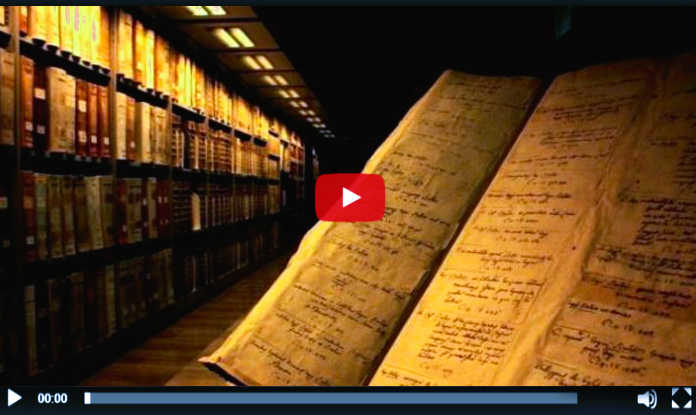
Historical Documents Kept in the Vatican Secret Archives
For example, the archives hold the official copy of the Papal decree splitting the New World in 1493, after it was “discovered” by Christopher Columbus. The Inter Caetera, as it was titled, gave Spain control of everything 100 leagues away from the Azores and Cape Verde, and Portugal the rest, the reason why today Brazil speaks Portuguese, while the rest of South America speaks Spanish.
There is the original copy of the infamous Decet Romanum Pontificem, the document which excommunicated Martin Luther in 1521. After Luther published his 95 Theses, a work critical of the Catholic church, the Vatican gave him 60 days to recant his condemnation; Luther publicly burned his copy of the warning and was subsequently kicked out of the church, sparking the Protestant Reformation.
Similarly, the archives house the letter sent to the Pope in 1530 by English noblemen, clergy, and even the Archbishop of Canterbury, asking that King Henry VIII be allowed to divorce his wife, Catherine of Aragon, so that he might marry Anne Boleyn. Written on an enormous 3-foot-wide parchment, the letter promised “extreme measures” if the Pope did not heed their request. Of course, the Pope rejected the request, triggering a break with the Church of England and the English Reformation.
Elsewhere, there are the minutes from the 1633 trial in which Galileo was tried as a heretic for arguing that the earth revolves around the sun, and not the other way around, an incredible moment in the history of religion versus science.
Similarly, the minutes from the trial against the Knights Templar were discovered amongst the archives in 2001, after having been lost for centuries due to an archival mistake. In the early-14th century and at the peak of their prodigious power, the Knights Templar had been accused of heresy and blasphemous behavior during the Crusades. Many were severely punished, even burned alive. However, as the discovered documents showed, the Pope actually absolved the group of blasphemy in 1308, totally changing the historical memory of the group and their relationship with the brutality of the Catholic church.
There are some who believe the Knights Templar trial is not the only thing in the Vatican Secret Archive that has been misplaced, perhaps even intentionally hidden. Some suggest that somewhere in the archives is the original copy of a correspondence between St. Paul and the Roman Emperor Nero from the 1st century, which either confirms or rebuffs the existence of Jesus Christ. Particularly if this correspondence confirms the existence of Jesus, why keep it hidden?
Others suggest that hidden among the archives are the cross Jesus was crucified on, and the crown of thorns he wore, the holy grail, the ark of the covenant, a collection of those great historical artifacts thought to be lost forever.
But that’s just the point; what we know is in the Vatican Secret Archive, what has been confirmed by the Vatican itself, is incredible, a monumental treasure trove of world history. But perhaps even more interesting are the things that the archives are said to house, which are unconfirmed…
What is the Most Powerful Force on the Planet? The Secret Ancient Egypt Never Wanted To Let Go Of… Now Yours…

Forbidden Access to the Archives
Skeptics say that the Vatican Secret Archive is anything more than it seems, that is, anything more than the Vatican is willing to officially admit, are apt to point out that the “secret” part of the name actually comes from a mistranslation of the Latin word “secretum,” which, in reality, means something closer to “private.” These skeptics assert that The Vatican Secret Archive does not imply mystery, but rather that it is simply the Vatican’s private records, the same as would be kept by any organization or company. In fact, the Vatican itself was so eager to make this clear that in 2019 they officially changed the name from the Vatican Secret Archive to the Vatican Apostolic Archive.
There is only one problem… regardless of the name or the translation, the archives are a secret.
Until 1881, none but the highest-level church officials had any access to the archives at all. That year, Pope Leo XIII opened the archives to select researchers, a policy which his successors have continued ever since. Except, you can’t just walk in and start looking around.
First, all entrants must be carefully accredited scholars – no journalists, students, or amateur historians allowed. Once accreditation is received, and the scholars make it inside, past the armed guards, browsing is not permitted. Instead, researchers can request up to three folders per day; these folders are not cataloged or organized, so they could contain anything. This means it could be years before researchers stumble upon anything of note. Worse still, credentials must be renewed every six months and can be revoked by the church at any time, meaning that if a researcher did happen to stumble upon something earth-shattering, their access could be quickly revoked.
That the Vatican holds their secrets tightly, there can be no doubt. In fact, they showed this blatantly for the world to see in 2020, not one year after they took ‘secret’ out of the name.
After considerable pressure from Jewish and human rights groups, the Vatican agreed to release documents pertaining to the reign of Pope Pius XII during the Second World War. Many had criticized Pope Pius for first failing to speak out against Mussolini’s racial campaign, then failing to condemn the holocaust as a whole, and perhaps even actively collaborating with Nazis. The question on everyone’s mind was, as the Nazis were rounding up Rome’s Jews, what was the Pope saying behind the scenes?
Asserting that “the church is not afraid of history,” the Vatican released a handful of documents related to Pope Pius. Unfortunately, it was far from the comprehensive collection they had promised. What they released looked more like a public image campaign than an attempt to bring history to light, leading to heavy, and ultimately ignored, criticism.
And that’s just it. When it comes to their archives, the Vatican guards their secrets closely, no matter the public pressure or what these secrets could mean for the world.
Of course, this begs the question: what other secrets might they be hiding?
The Grand Grimoire: The Red Dragon
In 1750, archaeologists discovered a mysterious book deep within the Tomb of Solomon in Jerusalem. It was inscribed with the year 1522, though those who examined it believed it was a copy of an older source, perhaps from the 1200s, perhaps even from an oral source much older than that.
But what truly shocked those who saw it was not the book’s date, but its contents. Written on the pages within were instructions on how to make magic talismans and amulets, how to cast magic spells, and summon demons.
Most dramatically, the book described how to summon the Devil by constructing a magic circle and performing a ritual involving the sacrifice of a baby lamb, and then, how to smite him into submission with a magic wand, at which point one could make a deal with the Devil. Intriguingly, the author of the book was allegedly one Honorius of Thebes, an apocryphal figure who was said to have been possessed by the Devil. The mysterious book was called the Grand Grimoire.

In the 18th century, grimoires, a word for a textbook of the occult, gained popularity in France. Accordingly, copies of the Grand Grimoire, said to be the most powerful of all grimoires, began to spread across the country and across the world to French colonies. There, the Grand Grimoire was called Le Dragon Rouge – ‘The Red Dragon’ – calling to mind the biblical words of Revelation, Chapter 12:
“And behold a great red dragon, having seven heads and ten horns, and seven crowns upon his heads. And his tail drew the third part of the stars of heaven, and did cast them to the earth.”
Yet, despite the alleged power of the Grand Grimoire, and the many copies spread across the world, none reported having summoned the Devil, and the book’s popularity faded into memory. Perhaps then the conclusion is that the Grand Grimoire was nothing but a hoax.
Some offer a different explanation. They say the Grand Grimoire is not a hoax, but rather that the commercialized copies spread around the world represent an edited version of the work, its true power censored out, and that somewhere, the original, unaltered copy remains.
Except, it’s not “somewhere”… we know where the original copy of the Grand Grimoire is. That’s right, according to the Vatican, it is stored in their secret archives.
Could the Vatican really have access to a book of magic spells, or even the ability to conjure the Devil? And if so, what other powers might they have?
BOOM! The Old Testament “Error” That Caused Life Expectancies To Drop By 375%…

Chronovisor – Device that Can View Events from the Past
In 1972, a bizarre headline appeared in an Italian magazine called La Domenica del Corriere. It read, “A Machine that Photographs the Past has Finally Been Invented.”
The article gave the account of a Catholic priest by the name of Father Pellegrino Ernetti, who asserted that hidden deep within the Vatican Secret Archives was a device which allowed its user to see and hear events from the past; not a time machine which sent a person back in time, but rather, a sort of time viewer which brought the past into the present, a device which could tune into specific events of the past and display them on a screen like some sort of “time traveling television.”
The device was called the Chronovisor, and with it, Ernetti asserted, he had been able to see the last days of the life of Jesus, and other biblical moments like the destruction of Sodom and Gomorrah and the creation of the Ten Commandments.
Most astonishingly, the article included a photograph of the face of Jesus at the moment of crucifixion, which Ernetti had purportedly taken using the device, proof, it seemed, of the Chronovisor’s existence and function.
For a while, the article caused a stir in the religious and scientific communities, before fading from memory, never confirmed, but equally, never disproven. Then, curiously, in 1988, the Vatican itself issued an official decree on the Chronovisor in which it warned that “anyone using an instrument of such characteristics would be excommunicated.”
Why, instead of denying the Chronovisor’s existence, would the Vatican instruct its followers not to use it? Could it be because the Vatican actually had the Chronovisor device hidden away deep in its secret archives?
But if not a window into the past, perhaps what is hidden in the Vatican Secret Archive is a look into the future…
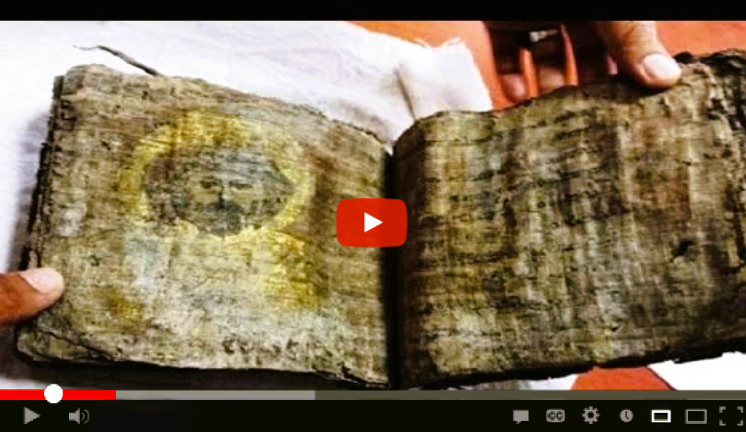
The Three Secrets of Fátima

On May 13th, 1981, Pope John Paul II was shot four times in an attempted assassination by a gunman in St. Peter’s square at the heart of Vatican City. The Pope was badly wounded, suffering severe blood loss, as he was rushed to the hospital. Yet, somewhat miraculously, he survived.
As he recovered, he began to attribute his survival to Our Lady of Fatima, the Catholic title for the Virgin Mary, publicly stating, “one hand pulled the trigger, and another hand guided the bullet.” Once he was back on his feet, he even traveled to the city of Fatima to place the bullet which had passed through his chest into the crown of an image of the Virgin Mary, thanking her for her protection.
Why would he do this?
The answer lies in something that happened 64 years to the day before the assassination attempt.

On May 13th, 1917, three children in the city of Fatima, Portugal, received the first of numerous shared visions in which they were purportedly visited by the Virgin Mary. According to the children, the Virgin Mary revealed to them three secrets. These became known as the Three Secrets of Fatima.
At the time, the world outside of Fatima, embroiled in World War I, paid little attention to the Portuguese children and their story, and in fact, the supposed Three Secrets might have been forgotten altogether if not for a local Bishop. Remembering the story in 1941, the Bishop got the last of the children still alive at that point, a nun named Sister Lucia, to write down the secrets in an official document.
According to her words, the First Secret had revealed to the children the suffering of the souls of the damned.
“Our Lady showed us a great sea of fire which seemed to be under the earth. Plunged in this fire were demons and souls in human form, like transparent burning embers, all blackened or burnished bronze, floating about in the conflagration, now raised into the air by the flames that issued from within themselves together with great clouds of smoke, now falling back on every side like sparks in a huge fire, without weight or equilibrium, and amid shrieks and groans of pain and despair, which horrified us and made us tremble with fear.”

The second secret seemed even more prophetic. It predicted the end of World War I, still ongoing in 1917, but the start of an even worse war shortly after. As Sister Lucia wrote,
“The war is going to end: but if people do not cease offending God, a worse one will break out during the Pontificate of Pope Pius XI. When you see a night illumined by an unknown light, know that this is the great sign given you by God that he is about to punish the world for its crimes, by means of war, famine, and persecutions of the church and of the Holy Father. The good will be martyred; the Holy Father will have much to suffer; various nations will be annihilated.”
In the midst of the Second World War when this was revealed in 1941, the secret seemed particularly poignant, and the Three Secrets of Fatima began to achieve mainstream recognition. But what was the
Third Secret, everyone wondered?
The Third Secret of Fatima
Cryptically, Sister Lucia would not reveal the Third Secret, proclaiming she had not been authorized by God to share it. Why would God not mind that the first two were shared, but be against the third?
Two years later, having taken ill with influenza, Sister Lucia was ordered by the Bishop to write down the Third Secret, a demand to which she relented, lest she die, and the secret be lost forever. The secret made its way to the Vatican and into their archives, sealed within an envelope with the shadowy instructions not to open it until 1960, “when it will appear clearer.” Yet, when the time came in 1960, the Vatican released an official statement which announced that it was “most probable the Secret would remain, forever, under absolute seal.”
This led to much speculation. What could the secret reveal that would be so dramatic as to necessitate being suppressed forever. As it was the height of the Cold War, The New York Times even speculated that the Third Secret might foretell “worldwide nuclear annihilation.”
Finally, in 2000, the Vatican came forward and released what they said was the text of the Third Secret. It spoke of:
“… a Bishop dressed in White […] killed by a group of soldiers who fired bullets and arrows at him,” and how “in the same way there died one after another the other Bishops, Priests, men and women religious, and various ay people of different ranks and positions.”
These words, the Vatican asserted, must be interpreted as symbolic language referring to the 1981 assassination attempt on Pope John Paul II, the “Bishop dressed in White” of which the secret spoke. It seemed the pieces of the puzzle had finally, more than 80 years later, been put together.
Or had they?
As the Vatican informed the public that the much-ballyhooed Third Secret had to do with a failed assassination attempt, 20 years passed, many were left thinking, that’s it? Why the decades of secrecy, why the “absolute seal,” why the initial prohibition from God, for something so relatively unremarkable?
Some say the answer is simple: the Third Secret the Vatican released was not the actual Third Secret, but rather, a fabrication.
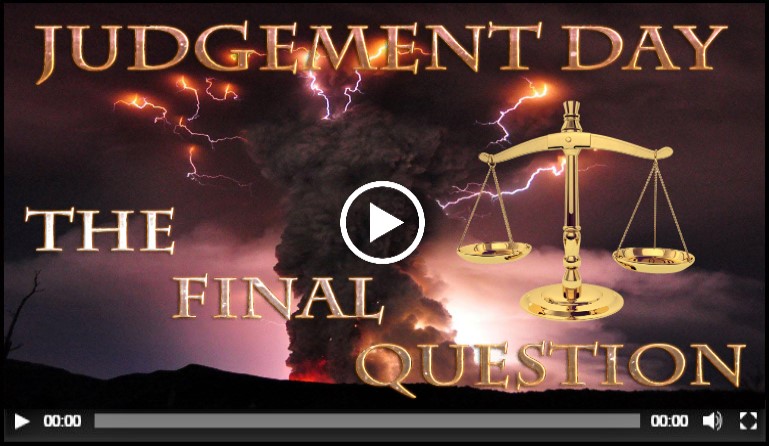
Shortly after the alleged Third Secret was revealed in 2000, a news article appeared which claimed to present an interview with then-cardinal Ratzinger, who would go on to become Pope Benedict XVI in 2005. According to the article, Ratzinger told the interviewer, “there is more than what we published” to the Third Secret.
Interestingly, after becoming the first Pope since the 1400s to relinquish office while still alive in 2013, Benedict responded to the article in 2016, calling it “absolutely untrue,” and asserting “the publication of the Third Secret of Fatima is complete.” Curiously, this was the first, and to that point only, official statement Benedict had made as Pope Emeritus. Why comment on an article nearly two decades old, and not any of the multitude of other things facing the world?
To this day, there are many who believe there is more to the Third Secret than the Vatican has published, including those within the Vatican itself. In fact, Benedict himself proclaimed in a 2010 speech in Fatima that “we would be mistaken to think that Fatima’s prophetic mission is complete.” Then, in 2020, Archbishop Carlo Maria Vigano gave an interview claiming that not only was the Third Secret the Vatican released “clearly incomplete,” but that the Vatican was involved in a “cover-up operation” of the true content of the secret.
If there is a cover-up, then, a cover-up of what?
It is interesting to note that back in 1980, almost a year before the attempt on his life, Pope John Paul II gave a speech in Germany in which he said of the Third Secret,
“If there is a message in which it is said that the oceans will flood entire sections of the earth; that, from one moment to the other, millions of people will perish . . . there is no longer any point in really wanting to publish this secret message. It is dangerous to want to satisfy one’s curiosity only, if one is convinced that we can do nothing against a catastrophe that has been predicted.”
Four years later, after the Pope had been shot and long-since recovered, an article appeared in Jesus Magazine in which then-Cardinal Ratzinger gave an interview claiming he had read the Third Secret, and that it related to “dangers threatening […] the life of the world.”
More alarmingly, the article asserted that Ratzinger had confirmed that the Third Secret was “essentially the same” as another prophecy that had been revealed in 1973 in Akita, Japan. There, the Virgin Mary had purportedly appeared to a nun and delivered a stunning message:
“The Father will inflict a terrible punishment on all humanity. It will be a punishment greater than the deluge, such as one will never have seen before. Fire will fall from the sky and will wipe out a great part of humanity, the good as well as the bad, sparing neither priests nor faithful.”
Could it be that the Third Secret of Fatima was not about the assassination of a Pope at all, but the annihilation of the world; does it foretell some sort of global apocalypse? And could the Vatican be suppressing this secret, even to this day, to prevent a global panic?
The philosophical questions are heavy. Would you want to know the date of your own death? What would you do if it was your last day on earth? More simply, if we’re all going to die, shouldn’t the Vatican tell us?
Moreover, if they wouldn’t even tell us about the end of the world, what else might they not be telling us?
Elongated Skulls at The Vatican Secret Archives

In 1988, news reports emerged alleging that strange, elongated, distinctly alien-looking skulls had been found during a restoration of the Vatican library. Rampant speculation ensued, with many suggesting that the Vatican Secret Archives must be hiding evidence of extraterrestrials.
Perhaps a marriage between the Vatican and extraterrestrials is too far out there, too convenient to contemplate. Except, the Vatican itself does not run from ties to aliens.
Consider the words of Cardinal Conrado Balducci, a high-ranking Vatican official since the 1960s and close friend to many Popes, who, in 1998, instructed followers to “remember a paragraph of the New Testament where St. Paul refers to Christ as King of the Universe, and not only as King of the world. That means that all beings in the Universe, including aliens, are reconcilable with God.”
What might Balducci, and the Vatican, know about the “Universe” that we don’t?
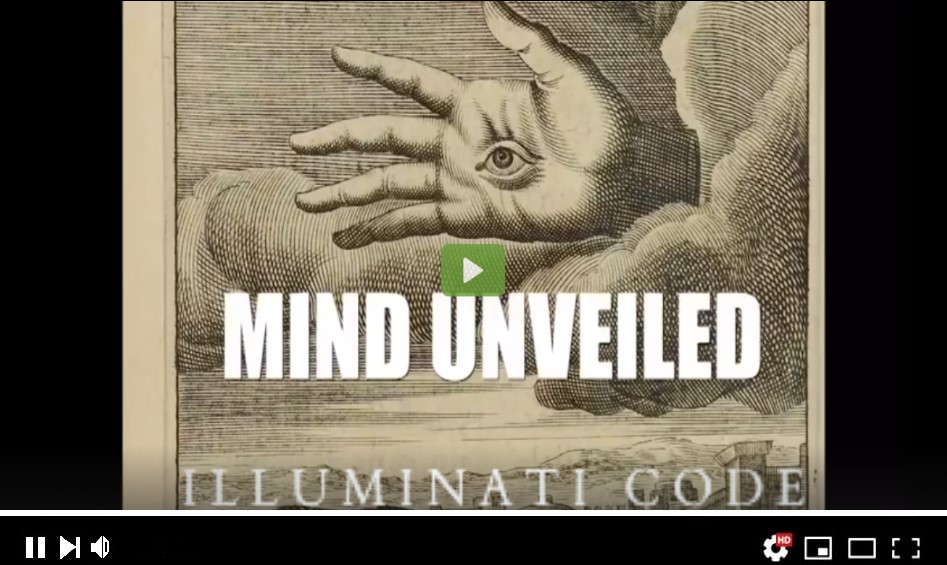
The L.U.C.I.F.E.R Telescope
In 2009, the Vatican held its first international astrobiology conference, bringing together top scientists from around the world and Vatican astronomers to discuss extraterrestrial life. As legendary American astronaut Gordon Cooper, one of the original seven people sent to space by the United States, asserted, “You want to know about UFOs and little green men? Contact the Vatican.”
In fact, even the current Pope, Pope Francis, has publicly declared that he would be willing to baptize aliens, asking rhetorically, “who are we to close doors?”
Far from closing doors, the Vatican freely seeks to open them. In Tucson, Arizona, the Vatican works with world governments and astrological associations to scour deep space for signs of extraterrestrial life using some of the most powerful telescopes on earth at the Mount Graham International Observatory. Curiously, the instrument which powers the most formidable of the Observatory’s telescopes is known as the Large Binocular Telescope Near-infrared Utility with Camera and Integral Field Unit for Extragalactic Research – or, L.U.C.I.F.E.R for short.
 Yes, the Vatican is searching for aliens using a telescope named after the Devil.
Yes, the Vatican is searching for aliens using a telescope named after the Devil.
So what does the Vatican know about aliens that we don’t, about the Devil, about the past and the future? Whatever it is, it is most certainly housed deep within their impregnable secret archives.
SOURCE:
https://universe-inside-you.com/vatican-secret-archives/






